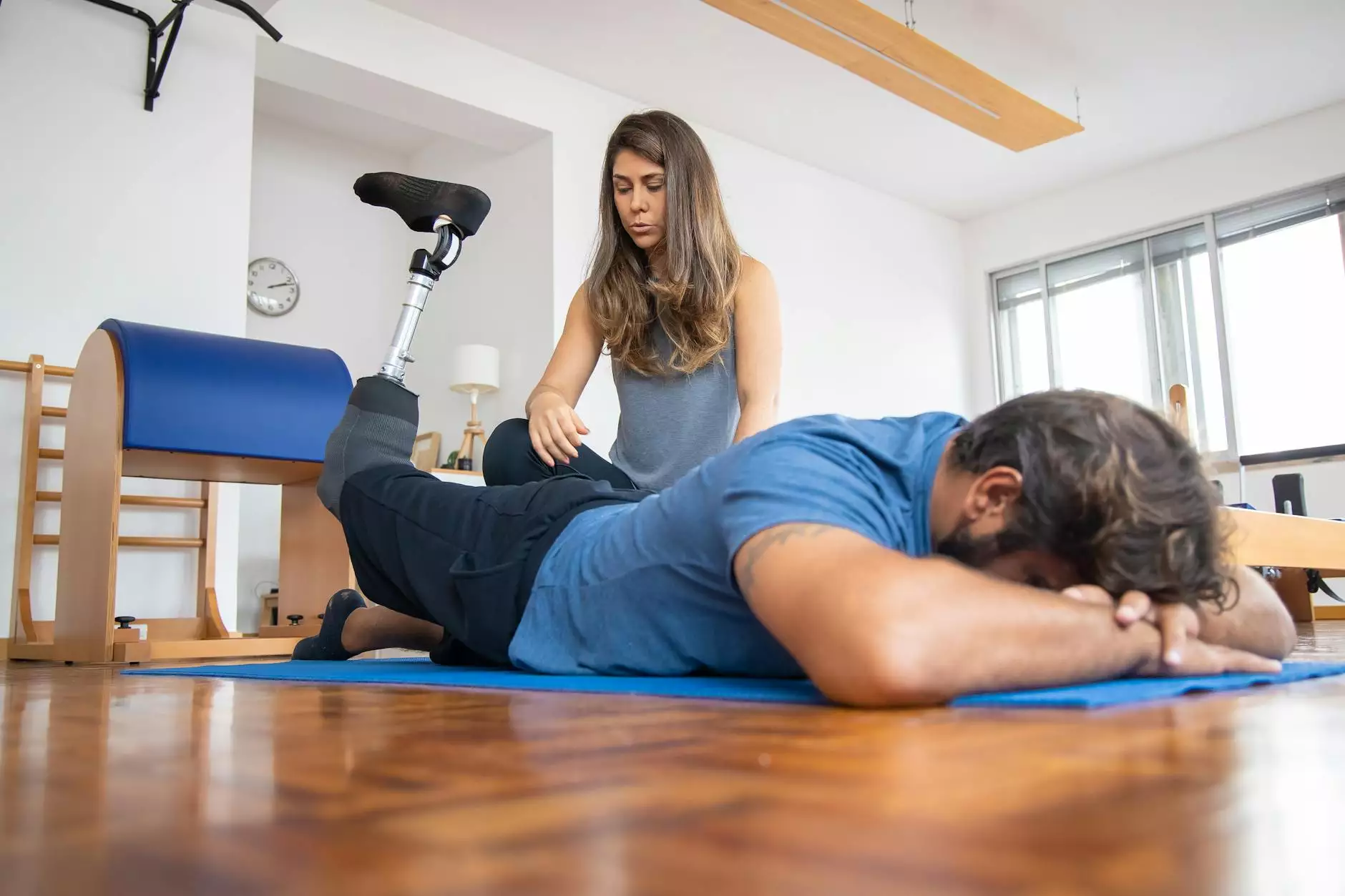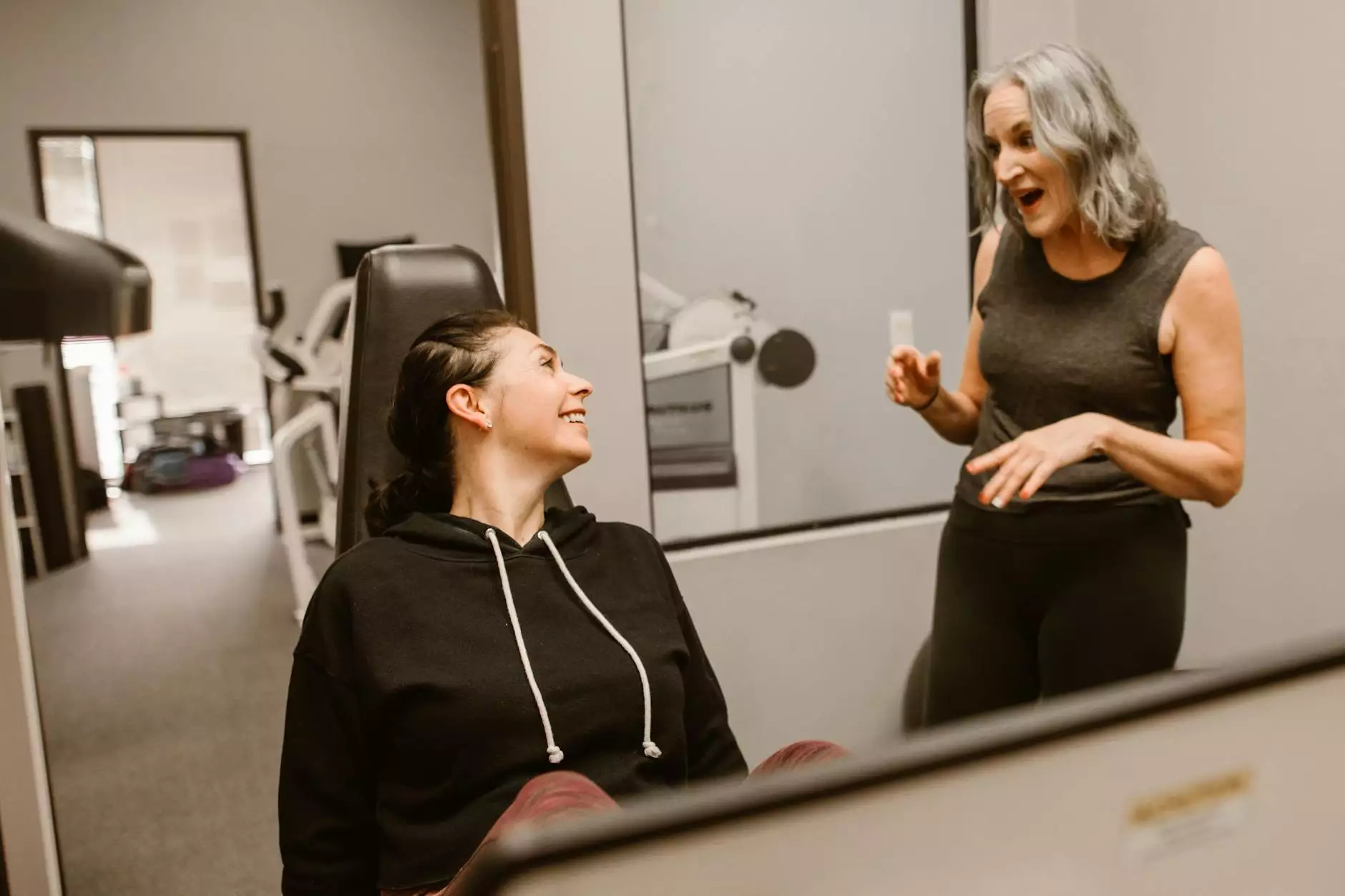The Glenohumeral Capsular Pattern: Understanding Its Impact on Rehabilitation

Understanding the glenohumeral capsular pattern is crucial for healthcare professionals, particularly in the fields of chiropractics and physical therapy. This article aims to provide a comprehensive overview of the condition, its implications on physical movement, and effective rehabilitation strategies.
What is the Glenohumeral Capsular Pattern?
The glenohumeral joint, a ball-and-socket joint located in the shoulder, has a specific pattern of movement restriction when its capsule becomes stiff or inflamed. This phenomenon is referred to as the glenohumeral capsular pattern. The typical pattern of restriction, often linked to conditions such as adhesive capsulitis (frozen shoulder), involves a limitation of external rotation, followed by abduction, and finally internal rotation. Recognizing and understanding this pattern is essential for diagnosing and treating shoulder conditions effectively.
Significance of the Glenohumeral Capsular Pattern in Treatment Approaches
From a therapeutic perspective, awareness of the glenohumeral capsular pattern is vital. It aids clinicians in determining appropriate physical therapy techniques and chiropractic adjustments that can restore full shoulder function. Here’s why this understanding is significant:
- Accurate Diagnosis: Recognizing the capsular pattern allows for differential diagnosis from other shoulder disorders, enabling targeted treatment plans.
- Customized Treatment Plans: Tailoring exercises and manipulations to address specific limitations can lead to more effective rehabilitation outcomes.
- Prevention of Further Injury: Understanding the limitations of joint movement mechanics can help in devising strategies to prevent exacerbation of shoulder injuries.
The Anatomy of the Glenohumeral Joint
To appreciate the glenohumeral capsular pattern, it's essential to first understand the anatomy of the shoulder joint. The glenohumeral joint consists of:
- Humeral Head: The upper end of the humerus (the bone of the upper arm).
- Glenoid Cavity: The shallow socket of the scapula (shoulder blade) that houses the humeral head.
- The Joint Capsule: A fibrous sheath surrounding the joint, providing stability and enabling smooth motion.
These components work together to allow a vast range of movements, making the shoulder highly mobile yet potentially susceptible to instability and injury, especially when the joint capsule undergoes pathological changes.
Characteristics of Glenohumeral Capsular Pattern
The glenohumeral capsular pattern is characterized by a specific sequence of lost range of motion:
- External Rotation: Often the first movement to be limited, impacting daily activities like reaching behind.
- Abduction: Following external rotation, abduction becomes restricted, limiting overhead movements.
- Internal Rotation: Lastly, internal rotation is affected, leading to difficulties with tasks like tucking in a shirt or reaching upwards.
This sequence of restrictions, if not addressed, can lead to significant functional impairments and further musculoskeletal complications.
Causes of Glenohumeral Capsular Pattern
Several factors can contribute to the development of a glenohumeral capsular pattern, including:
- Injury: Acute injuries such as fractures or dislocations can lead to joint capsule inflammation.
- Overuse: Repetitive motions, particularly in athletes or manual laborers, can result in capsular thickening.
- Immobilization: Prolonged periods of shoulder immobilization can lead to stiffness and contractures.
- Systemic Conditions: Disorders like diabetes and thyroid dysfunction can increase the risk of developing shoulder capsule issues.
Diagnosis of Glenohumeral Capsular Pattern
Diagnosing the glenohumeral capsular pattern involves a combination of patient history, physical examination, and sometimes imaging studies. Clinicians look for:
- Range of Motion Testing: Assessing the degrees of freedom in external rotation, abduction, and internal rotation.
- Special Tests: Utilizing specific orthopedic tests to confirm instability or capsular tightness.
- X-rays or MRI: In certain cases, imaging may be used to rule out other pathologies such as tears or arthritis.
Rehabilitation Strategies for Glenohumeral Capsular Pattern
A comprehensive rehabilitation program is fundamental for managing the glenohumeral capsular pattern. Here are effective strategies used in physical therapy and chiropractic care:
1. Manual Therapy Techniques
Manual therapy methods can help improve joint mobility and alleviate pain. These methods include:
- Joint Mobilization: Gentle oscillatory movements are used to increase joint play.
- Soft Tissue Manipulation: Techniques aimed at reducing muscle tension around the shoulder.
2. Therapeutic Exercises
Engaging in specific exercises is crucial for regaining strength and mobility. Effective exercises may encompass:
- Range of Motion Exercises: Gradually restoring shoulder motion through gentle stretching.
- Strengthening Exercises: Using resistance bands or weights to strengthen rotator cuff and scapular stabilizer muscles.
3. Modalities for Pain Management
Using modalities can enhance the healing process, stimulate blood flow, and alleviate discomfort:
- Heat Therapy: Applying heat pre-treatment can help prepare the tissues for mobilization.
- Cold Therapy: Utilizing ice packs post-exercise to reduce swelling and inflammation.
4. Posture and Ergonomics
Improving posture and optimizing biomechanics during daily activities can prevent re-injury. This includes:
- Ergonomic Adjustments: Modifying workstation heights and angles to promote better shoulder alignment.
- Awareness Training: Educating patients about maintaining proper shoulder posture during work and leisure activities.
Outcomes of Rehabilitation for Glenohumeral Capsular Pattern
With appropriate intervention, patients can experience significant improvements in function and quality of life. Outcomes may include:
- Increased Range of Motion: Restoration of lost mobility through disciplined rehabilitation.
- Pain Reduction: Effective pain management strategies lead to decreased discomfort.
- Enhanced Functionality: Improved ability to perform daily tasks and return to sports or hobbies.
Prevention of Glenohumeral Capsular Pattern
Preventing the development of a glenohumeral capsular pattern involves proactive measures such as:
- Regular Stretching: Consistent stretching routines for maintaining shoulder flexibility.
- Strength Training: Focused strengthening of shoulder mechanics to support joint integrity.
- Awareness of Posture: Maintaining good shoulder posture can help in avoiding overuse and strain.
Conclusion
The glenohumeral capsular pattern represents a considerable barrier to shoulder function and requires a thorough understanding by healthcare providers. Using a multi-faceted approach that combines manual therapy, therapeutic exercises, and patient education can significantly enhance recovery outcomes. For individuals struggling with limited shoulder mobility, collaborating with professionals in chiropractic care and physical therapy is critical for addressing this condition effectively and retaking control of everyday activities.
For more information on managing shoulder conditions and the glenohumeral capsular pattern, visit IAOM-US.








